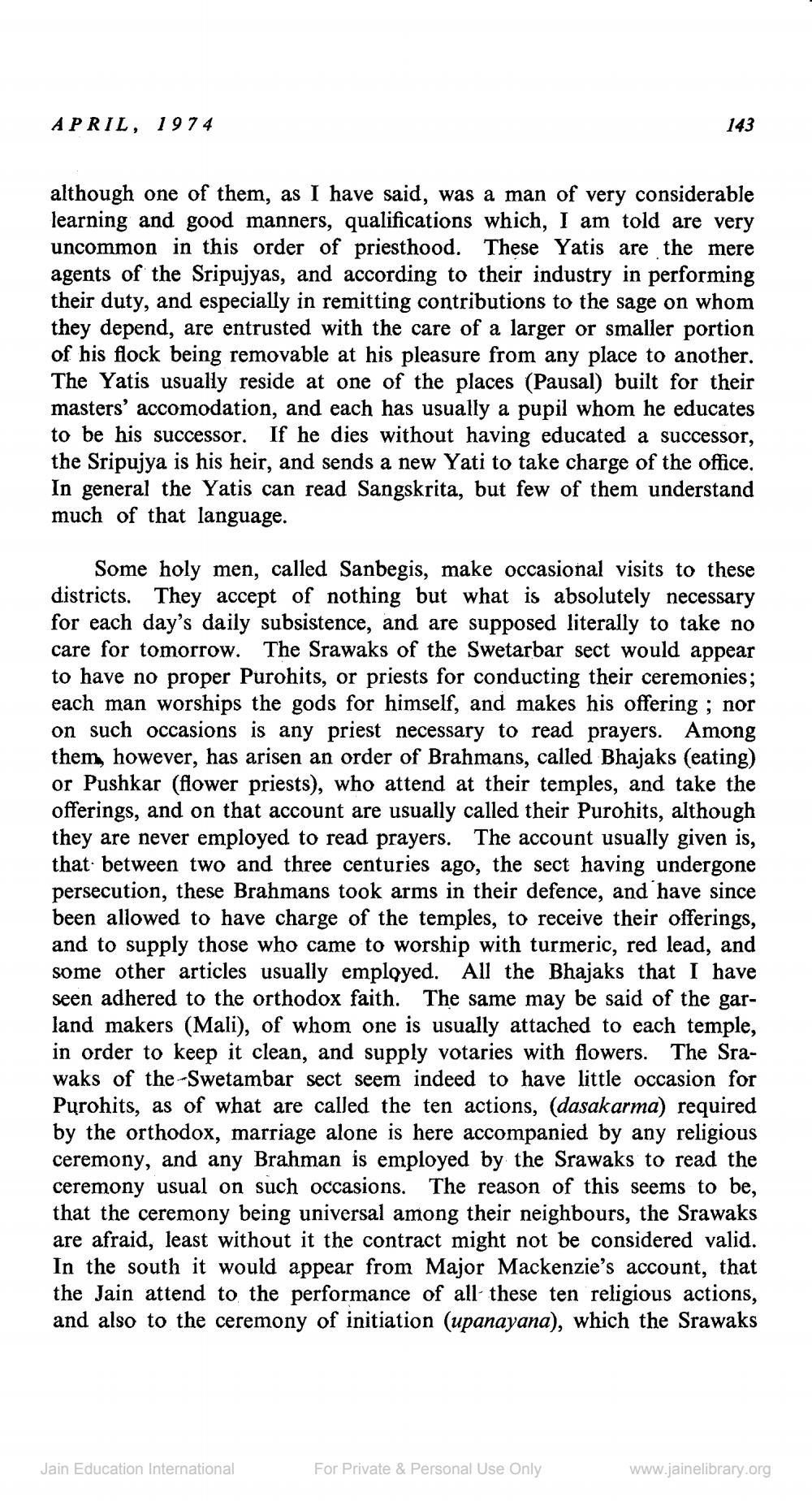Book Title: Jain Journal 1974 04 Author(s): Jain Bhawan Publication Publisher: Jain Bhawan Publication View full book textPage 5
________________ APRIL, 1974 143 although one of them, as I have said, was a man of very considerable learning and good manners, qualifications which, I am told are very uncommon in this order of priesthood. These Yatis are the mere agents of the Sripujyas, and according to their industry in performing their duty, and especially in remitting contributions to the sage on whom they depend, are entrusted with the care of a larger or smaller portion of his flock being removable at his pleasure from any place to another. The Yatis usually reside at one of the places (Pausal) built for their masters' accomodation, and each has usually a pupil whom he educates to be his successor. If he dies without having educated a successor, the Sripujya is his heir, and sends a new Yati to take charge of the office. In general the Yatis can read Sangskrita, but few of them understand much of that language. Some holy men, called Sanbegis, make occasional visits to these districts. They accept of nothing but what is absolutely necessary for each day's daily subsistence, and are supposed literally to take no care for tomorrow. The Srawaks of the Swetarbar sect would appear to have no proper Purohits, or priests for conducting their ceremonies; each man worships the gods for himself, and makes his offering ; nor on such occasions is any priest necessary to read prayers. Among them, however, has arisen an order of Brahmans, called Bhajaks (eating) or Pushkar (flower priests), who attend at their temples, and take the offerings, and on that account are usually called their Purohits, although they are never employed to read prayers. The account usually given is, that between two and three centuries ago, the sect having undergone persecution, these Brahmans took arms in their defence, and have since been allowed to have charge of the temples, to receive their offerings, and to supply those who came to worship with turmeric, red lead, and some other articles usually employed. All the Bhajaks that I have seen adhered to the orthodox faith. The same may be said of the garland makers (Mali), of whom one is usually attached to each temple, in order to keep it clean, and supply votaries with flowers. The Srawaks of the Swetambar sect seem indeed to have little occasion for Purohits, as of what are called the ten actions, (dasakarma) required by the orthodox, marriage alone is here accompanied by any religious ceremony, and any Brahman is employed by the Srawaks to read the ceremony usual on such occasions. The reason of this seems to be, that the ceremony being universal among their neighbours, the Srawaks are afraid, least without it the contract might not be considered valid. In the south it would appear from Major Mackenzie's account, that the Jain attend to the performance of all these ten religious actions, and also to the ceremony of initiation (upanayana), which the Srawaks Jain Education International For Private & Personal Use Only www.jainelibrary.orgPage Navigation
1 ... 3 4 5 6 7 8 9 10 11 12 13 14 15 16 17 18 19 20 21 22 23 24 25 26 27 28 29 30 31 32 33 34 35 36 37 38 39 40 41 42 43 44 45 46 47 48 49 50 51 52 ... 107
